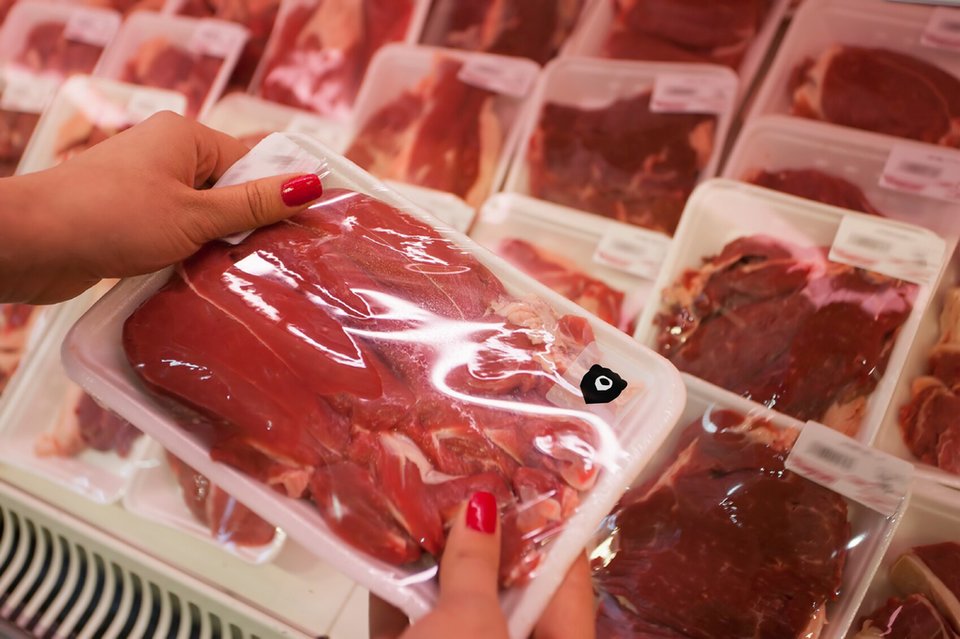tech
Sensing a disturbance in packaging
Luke Christou talks to Max Grell, CEO of packaging tech startup Blakbear, to find out how the company's innovative sensor technology could help combat food waste.

T
he UK’s food industry is estimated to waste 3.6 million tonnes of food each year, with over 2 million tonnes of that waste, equal to 1.3 billion meals, likely still edible.
Households are an even worse offender, discarding approximately 4.5 million tonnes of edible food annually, at a cost of £14bn.
The biggest cause of edible food waste in the household is perceived failure to use it in time, accounting for 41% of waste according to data from the Waste and Resources Action Programme (WRAP).
The issue likely stemming from confusion over ‘Best Before’ labels that indicate when a product is likely to begin losing quality, rather than when they become inedible. According to anti-food waste startup Too Good To Go, expiry labels are responsible for 10% of all food waste across Europe.
Various solutions have been proposed, such as legislative changes to standardise the way food is labelled and clear up confusion over best before dates. However, a handful of emerging startups believe that sensor technology could offer a solution.
Monitoring food freshness in real-time
One such company is BlakBear, a London-based food supply chain company, which has developed a paper-based sensor that can be placed inside FMCG packaging to monitor the freshness of the food inside and determine whether it is still safe to consume.
Costing just $0.02 to manufacture, the paper-based electrical gas sensor (PEGS) relies on nitrogenous gases, such as ammonia, that are released by microbes as food spoils.
This gas is absorbed into the paper’s fibres and breaks down into ions, which are measured by electrodes printed on to the paper label. Using these readings, the sensor is able to accurately detect whether food has begun to spoil.
“It [the PEGS] goes inside a food package, and sends data wirelessly to the cloud, where machine learning determines freshness and predicts shelf-life,” Max Grell, CEO of BlakBear explains.
While the sensors work best with protein-rich foods, such as fresh meat, chicken, and fish, given the sensor works by detecting protein spoilage, BlakBear’s machine learning model can be tweaked to work with all food types.
“Our speciality is protein-rich foods like meat and fish, but we use the same device for all food types, and the cloud machine learning model adapts,” Grell says.
Combatting food waste
BlakBear’s sensors have the potential to significantly reduce consumer food waste. Food companies can pay for access to the real-time shelf life and freshness data through an API connection or BlakBear dashboard.
This data can then be made available to consumers, who can scan an RFID chip embedded within the food packaging to access shelf-time information through their smartphone device.
BlakBear’s label is capable of measuring the presence of ammonia down to 200 parts per billion, making it 100 times more effective than even the best of human noses.
Providing better judgement than current methods, these sensors can provide consumers with peace of mind that a product is safe to eat, regardless of the date on the label, and help to avoid food poisoning as a result of consuming spoiled food.

Sensors within the paper label can detect the presence of gases emitted as food spoils and indicate whether it is still safe to eat. Credit: Blakbear
With handy reminders delivered through a smartphone device, the sensors can also warn consumers when a food product is close to expiry, helping them to plan meals accordingly to avoid unnecessary waste.
“60% of food waste is at home with consumers, yet one in ten people get food poisoning each year,” Grell points out.
“We want to help everyone make better choices with food, notifying about food that is likely to go bad soon, and warning about food that is already toxic.”
Since bringing its technology to market, the startup has seen strong demand from consumer-facing companies that view BlakBear sensors as a positive way to engage with consumers around food waste.
Fixing food supply chains
However, food waste isn’t only a problem at a consumer level – in the UK alone, production stage waste is estimated at £1.2bn per year if this food was to be sold at farm gate prices.
Some of this waste may be due to overproduction, but also due to the appearance of the produce, which is rejected with little regardless of whether it is actually safe to eat. The sensors could help to dispel some of this negativity around ‘ugly’ foods.
Likewise, for food products that are particularly prone to spoilage, quality control testing can also come at a considerable cost to FMCG processors.
Our data helps fix supply chains while making quality control testing less labour intensive.
Using sensors within the packaging, processors can stop relying on manual inspections and begin to use microbial monitoring to ensure products are up to standard before they reach retail shelves.
“A chicken processor we work with wastes 2% of their chicken with destructive quality control,” Grell explains. “We provide non-destructive, instant and digital quality control.”
BlakBear’s sensors can be applied in a number of ways to cut down food that goes to waste as it travels through the supply chain.
Manufacturers and suppliers can place sensors inside bulk containers and pallets, for instance, to detect spoilage as food goods move from one point to another.
“Our data helps fix supply chains while making quality control testing less labour intensive,” Grell says.
Bringing BlakBear sensors to supermarket shelves
Soon, BlakBear’s technology could be a familiar sight on FMCG packaging.
Not only can these sensors help consumers to make better decisions regarding food, but also help to tackle other issues in the food industry, such as unsustainable amounts of plastic packaging.
More than 8.2 billion kilograms of plastic food packaging is produced in Europe annually, with plenty of it finding its way into landfill, oceans, and often into the food we consume.
BlakBear is already piloting its sensors with a number of partners in the food industry, from major supermarkets, to consumer goods companies, and many other sectors.
However, rather than rolling out the technology at scale, the startup is focused on learning how it can be best applied to fight food waste among processors, retailers, and consumers.
“We want trusting, transparent relationships, prioritising learning for both parties,” Grell says.